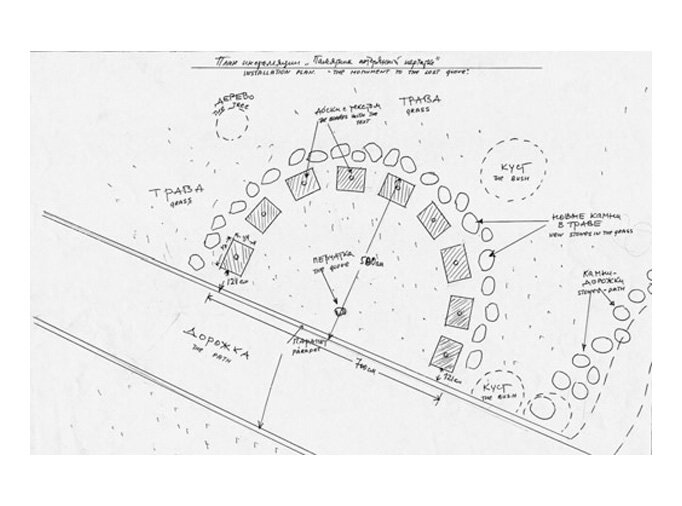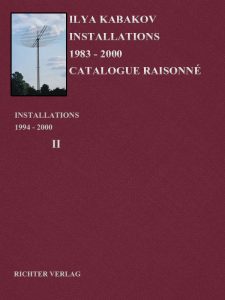Monument to a Lost Glove
YEAR: 1996
CATALOG NUMBER: 101
PROVENANCE
Version 1
Collection of the artist.
Version 2
Collection of the artist.
Version 3
Permanent installation near the Museum für Gegenwartskunst, Basel, since May 1998.
Collection Emanuel Hoffmann-Stiftung, Basel, since November 1998.
EXHIBITIONS
Version 1
City Park, Lyon (OrganiZation: Association Française d’Action Artistique and Musée d’Art Contemporain, Lyon), France
G7 Summit, 28 June – 30 September 1996
Avenue des Champs-Elysées, Paris, France
Les Champs de la Sculpture 2000, 15 September – 14 November 1999
Version 2
26th Street and Broadway, near the Flatiron Building, New York (Organization: Public Art Fund), United States
Ilya Kabakov. Monument to a Lost Glove, 17 March – 17 September 1997
Center for Curatorial Studies Museum, Bard College, Annandale-on-Hudson, United States
Ilya Kabakov: 1969-1998, 25 June – 3 September 2000
The Rhode Island School of Design (RISD) Museum, Providence, United States
Ilya Kabakov. Ten Characters-Albums, 13 July – 30 September 2001
Version 3
Basel, Switzerland
Permanent installation near the Museum für Gegenwartskunst, since May 1998
CONCEPT AND DESCRIPTION OF THE INSTALLATION
In the park, next to a narrow walking path covered with yellow sand, an old women’s glove made of red leather lies in the grass, forgotten by someone. Nine metal tablets are placed on metal poles leaning toward the glove in a semicircle that doesn’t spill over onto the path. The glove is in the center of this half-moon. Externally this resembles a half-ring of music stands erected for a concert ‘in the open air.’
As one approaches each of these tablet-music stands, what is on them becomes visible, and the texts are engraved on their metal surfaces in 4 languages: French, English, German, and Russian. Each text – there are 9 in all, the same number as there are plaques – are utterances by various ‘people’ about the ‘lost glove’ that they have seen in the grass. It’s as though these are the utterances and thoughts that suddenly came into their heads, (in conformity, of course, with the personality of each), at the sight of the ‘unexpected discovery.’ Everything taken together forms a unique spectrum of internal images, memories and associations, not without, to a certain degree, humor, sadness and a certain poeticness – as is the case with everything that involves our memory. Herein lies the justification for the name of the installation Monument to a Lost Glove: any piece of nonsense, even a glove lost by someone, can acquire infinite value and significance if it is capable of touching something very important and dear to us in our memories, in our past.
The text of all nine people, despite their diversity, are written in one genre, the genre of rhythmic prose (not to be confused with blank verse). In the first place, this is in order to create a unified, harmonious ensemble consisting of various and often incompatible ‘voices’ (of course, in life such people, could not stand next to one another). In the second place, this is in order to impart to the ‘ensemble’ a distinct ‘poetic’ resonance, which is dictated by the very place where the installation is erected, where this concert of ‘voices’ takes place: in one of the corners of a small but beautiful park in Lyon, surrounded by rose bushes and flowering trees.
There are 12-14 lines in each text. This is in order to equalize all the ‘heroes’ in the fullness of their utterances, as well as to ensure that all the tablets have the same visual appearance and so that the viewer can pass by, reading the texts in a semi-circle in one and the same rhythm, spending an identical amount of time reading each of them.
Images
Literature







